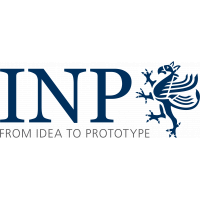Temporal analysis of a miniaturized plasma jet: a comprehensive study of the electrical and chemical characteristics
H. Jablonowski, K. Hadian Rasnani, R.Rataj, F. do Nascimento, U. Hoffmann, L. Miebach, R. Bansemer, S. Bekeschus, K.-D. Weltmann, T. von Woedtke, R. Brandenburg, and T. Gerling J. Phys. D: Appl. Phys., 58, (2025) 345203
Characterization and comparability study of a series of miniaturized neon plasma jets
H. Jablonowski, U. Hoffmann, R. Bansemer, S. Bekeschus, T. Gerling, and T. von Woedtke, J. Phys. D: Appl. Phys., 57, (2024) 195202
Toxicity and virucidal activity of a neon-driven micro plasma jet on eukaryotic cells and a coronavirus
D. M. Mrochen, L. Miebach, H. Skowski, R. Bansemer, C. A. Drechsler, U. Hoffmann, M. Hein, U. Mamat, T. Gerling, U. Schaible, T. von Woedtke, and S. Bekeschus, Free Radic. Biol. Med., 191, (2022) pp. 105-118
Enhanced atmospheric pressure plasma jet setup for endoscopic applications
J. Winter, T. M. C. Nishime, R. Bansemer, M. Balazinski, K. Wende, and K.-D. Weltmann, J. Phys. D: Appl. Phys. 52 (2019) 024005
On the development of a deployable cold plasma endoscope
J. Winter, T. M. C. Nishime, S. Glitsch H. Lühder, and K.-D. Weltmann, Contrib. Plasma Phys. 58 (2018) 404
![]() inp-greifswald [punkt] de
inp-greifswald [punkt] de